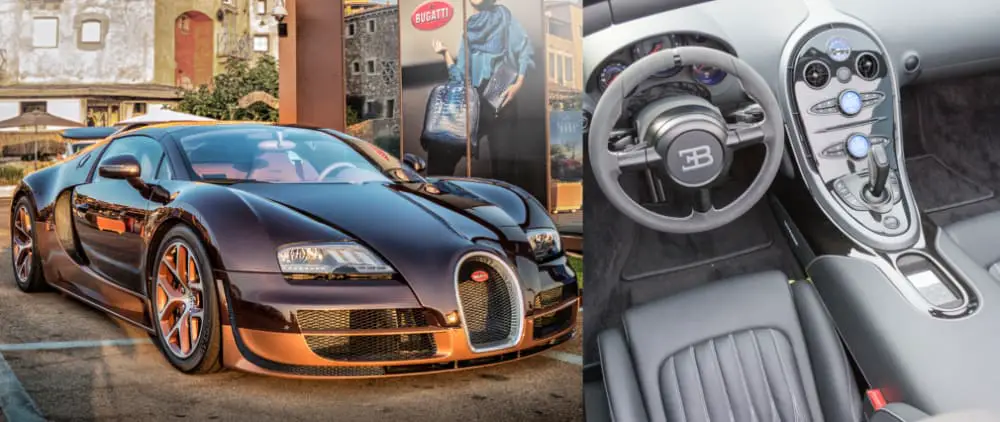
Bugatti is a name synonymous with exceptional quality, innovation, beauty, and of course, exclusivity.
From day one, these supercars have pushed the limits of design and performance and continue to do so to this day – but are Bugattis manual or automatic?
Modern Bugattis have either semi-automatic or fully automatic transmissions for their high-powered engines. In contrast, the very early models had four-speed manual transmissions, which evolved from 10-plate to single-plate clutch and engine-integrated transmissions by the 1950s.
Let’s explore the evolution of the transmissions found in Bugattis from the early days to the most current models and see how Bugatti has influenced other supercar gearbox designs over the years.
| Bugatti Model | Gearbox |
|---|---|
| Bugatti Veyron | Automatic |
| Bugatti Chiron | Automatic |
| Bugatti Centodieci | Automatic |
| Bugatti La Voiture Noire | Automatic |
| Bugatti Bolide | Automatic |
Automatic Vs. Semi-Automatic Vs. Manual Transmission
Before we examine whether Bugatti’s are manual or automatic, we need to understand the differences between these gearboxes and why modern supercars need semi- or automatic transmissions.
Let’s first look at the manual and semi-automatic transmissions, as these are more closely related. With a manual transmission, the gearbox requires a clutch to shift gears. The ‘stickshift’ type transmissions are manual.
With a semi-automatic, the functionality of the clutch is removed from the driver, and the car performs this action electronically. The semi-automatic transmission is ideal for precise gear changes in performance engines.
With each of these transmissions, there is still a shift of gears, whether by paddle or stick, but in an automatic transmission, there is no actual ‘gear shift’ done by the driver. Changing gears up or down is done completely by the vehicle’s electronics.
The fully automatic transmission allows super-high-performance engines to achieve maximum outputs with precision and will enable the driver to enjoy the experience!
Early Bugatti’s Were Manual
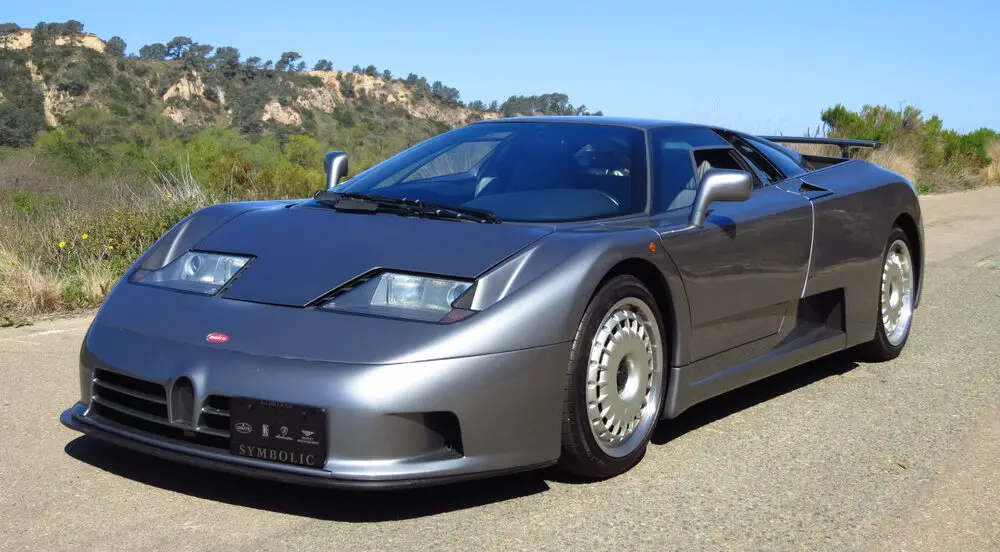
The 1909 T10 6/7 PS had a four-speed manual gearbox with multiple Brevet-Bugatti clutches, and this improved to a 10-plate clutch system in models produced from 1910 onwards.
Bugatti had different versions of the clutch ranging from the 10-plate to the single plate, as well as dry and wet clutch variations over the years. However, each model was still essentially a manual transmission, and this trend continued through the 90s.
With the introduction of the EB110 model in 1991 under Italian owner Romano Artioli and the subsequent release of the EB 110S in 1992, both of these cutting-edge cars still utilized a 6-speed manual gearbox.
This all changed in 2005 when the cutting-edge Bugatti Veyron was released.
The Shift To Automatic Gearboxes In 2005 With Bugatti’s DSG
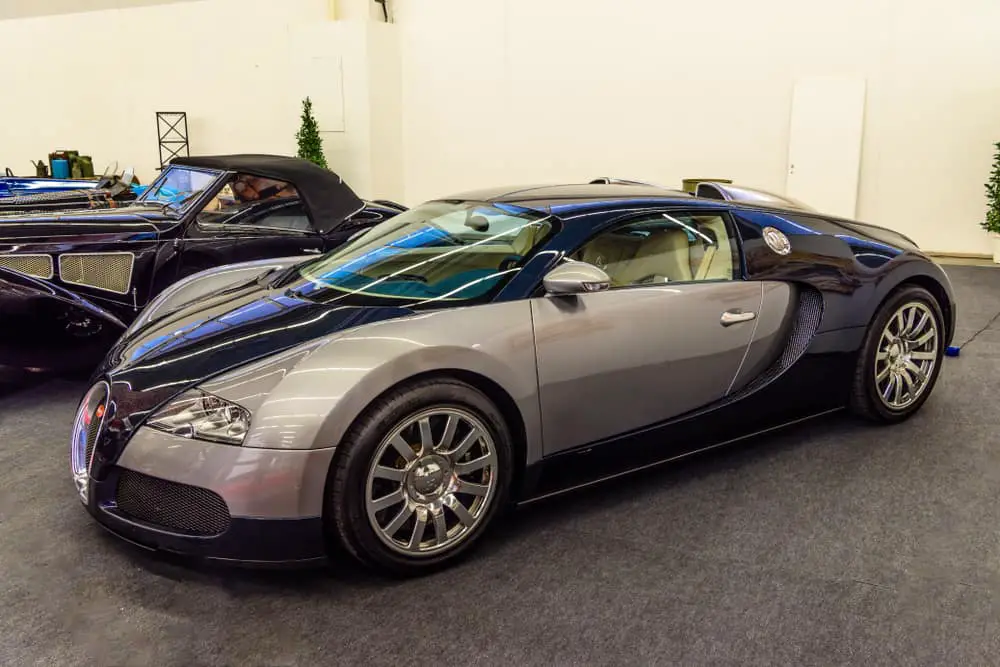
The Direct Shift Gearbox, or DSG, is designed to be faster and more accurate than the automatic gearboxes that preceded it.
The DSG comprises two gearboxes and two clutches that combine the functionality of both mechanical and electronic systems to produce high-performance transmissions in supercars capable of handling the immense torque generated in the engine.
The dual-clutch gearbox uses hydraulics to open and close individual clutches and select gears automatically.
The 7-Speed Veyron Automatic Gearbox – A World First
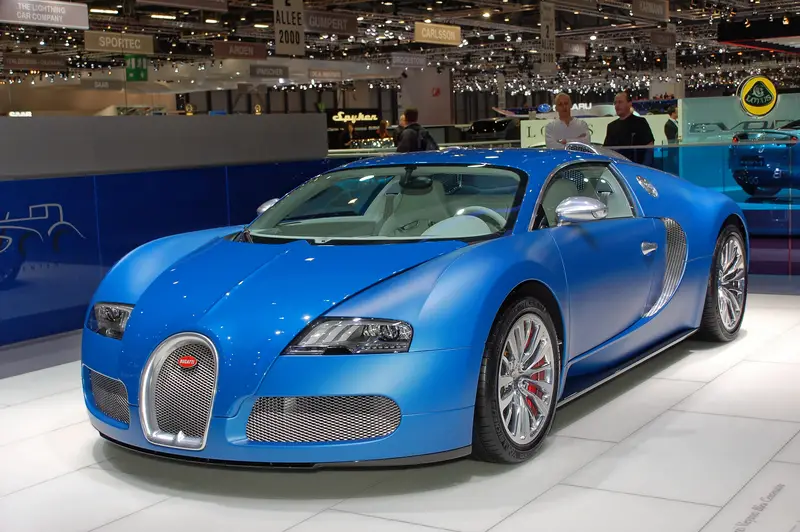
The Bugatti Veyron gearbox uses two clutches, one to select even bags and one to select oddly and reverse gears.
The 7-speed gearbox in the Veyron is one of the fastest in the world. The two clutches have four gears each. The key to this technology is that the clutch and gears not in use can anticipate which equipment will be used next and facilitate ultra-smooth shifting.
This means the engine can deliver its maximum performance automatically, without the driver having to react in microseconds to necessary gear shift changes.
Bugatti developed this gearbox as the first vehicle manufacturer to design and create a 7-speed DSG gearbox. To harness the 1200Nm of torque in the Veyron’s engine and deliver the performance expected, Bugatti again pushed the limits of gearbox technology to suit their cars.
How The Bugatti 7-Speed DSG Automatic Gearbox Works
This DSG gearbox illustrates the difference between the DSG and conventional automatic transmissions, as no torque converter is utilized for the moving-off element. Instead, the dual-clutch system is engaged using two wet-running multi-disc clutches.
At the time of the development in 2004, no other vehicle maker outside of VW could offer a comparable technology, and the DSG gearbox was also seen in other VW-owned models such as the VW Touran, Golf, Audi TT, and A3 as well as the Skoda Octavia and SEAT Altea.
The DSG gearbox provided hyper-fast shifting even when engaging the manual paddles behind the steering wheel or the joystick in the center console.
Since then, the DSG automatic gearbox has been used in Bugatti to achieve the seamless, silky gear shifts demanded and expected of the world’s finest supercars.
The Bugatti Chiron 8-Speed Automatic DSG
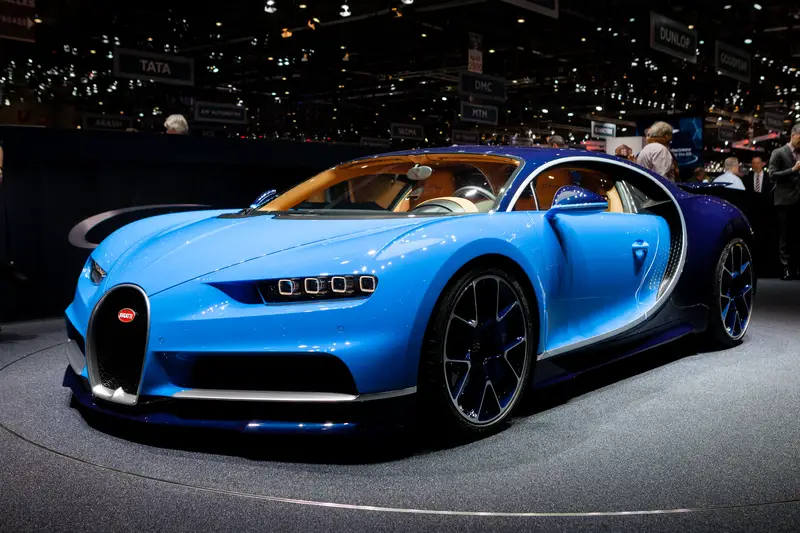
One of the changes to the development of the Chiron, which was at one stage the world’s fastest production supercar, topping more than 300mph, Bugatti added an 8-speed dual-clutch automatic gearbox, upgraded from the 7-speed DSG of the Veyron.
Bugatti’s ‘CentoDieci,’ meaning ‘110,’ is another all-powerful limited edition supercar using Bugatti’s automatic DSG transmission. This one is the 7-speed version and not the 8-speed automatic gearbox seen in the Chiron.
The Divo, which Bugatti made to be faster than the Chiron on the track, also has a 7-speed DSG transmission powering the all-wheel drive as was the Mistral released in 2022 and according to Bugatti’s CEO Mate Rimac, this would be the last W16 Bugatti made.
Other Bugatti models, like the ‘Voiture Noire,’ use the same 8-speed automatic transmission as the Chiron. This is essentially a Chiron, but custom-made for a particular client who wanted a homage to the 57C Atlantic.
Bugattis Are Automatic
For most of their existence and until the development and usage of the DSG transmission by parent company VW, Bugatti’s were mostly manual.
But, as engine technology and power developed and the electronics became more advanced, the design and creation of 7-speed and 8-speed dual-clutch automatic transmissions were born out of necessity.
When you consider that most (if not all) modern supercars use DSG transmissions as well as smaller ‘non-supercar’ vehicles, the impact of Bugatti’s commitment to innovation truly embodies the spirit of their founder.
They have come a very long way since the days of the single-plate manual clutch that dominated their early models.
